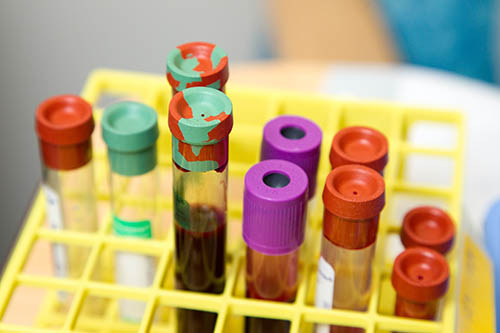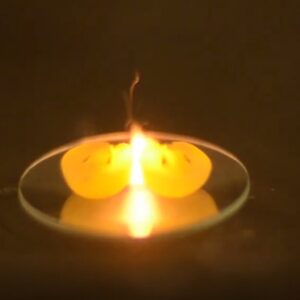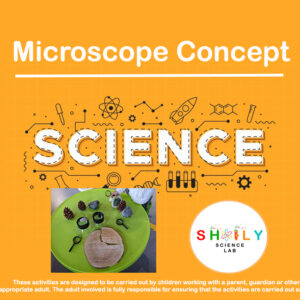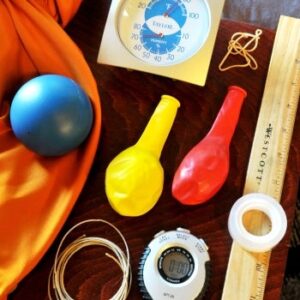I’m not a big fan of cabbage except for when it’s used for science! Food science is super cool and is awesome for kids. This isn’t the sweetest smelling science experiment we have done, but once you get past the smell this cabbage science experiment is fascinating. Amazing chemistry for kids with simple food. So over here we say, don’t stop playing (learning) with your food!
Grade 6: Chemistry: Chemical Reaction Part 2
Red Cabbage Science Experiment for Kids Chemistry
Description
Objective
The pH scale is a fascinating scale that identifies how close something is to acid and how close it is to an alkaline material. There are tons of fun pH science experiments for kids out there, but one of the most thrilling and satisfying is the cabbage pH indicator science experiment.
In this experiment, kids learn how cabbage can be used to test liquids of varying acid levels. Depending on the pH of the liquid, the cabbage turns various shades of pink, purple, or green! It’s incredibly cool to watch, and the kids love it! It’s a MUST try for a classic science experiment.
This makes a great elementary age science activity (and up!), but adult supervision and assistance is still required!
THE DENSITY OF SALT WATER
Get ready to add this simple salt water density experiment to your preschool science lesson plans this season. If you want to learn about why objects float in salt, or maybe they don’t, let’s dig in. While you’re at it, make sure to check out these other fun water experiments.
Materials
CABBAGE JUICE SCIENCE SUPPLIES
Grab a head or two of red cabbage and let’s get started! Even if your kids swear they hate cabbage, they will be loving it (at least for science sake) after this awesome cabbage chemistry experiment.
- Red cabbage
- Several jars or small containers
- Lemons (grab a few for a couple of extra science activities you will find below)
- Baking soda
- Other acids and bases to test (see more items to test below)
- pH test strips (optional but older kids will enjoy the added activity).
HOW TO MAKE CABBAGE JUICE PH INDICATOR
Setting up your cabbage science experiment takes a bit of prep work. This is an adult assisted science experiments due to using knives and boiling water.
Please keep in mind the individual abilities of the kids working on this experiment. This science experiment is not intended for preschool science.
You will first start by cutting your red cabbage into small pieces. The cabbage juice indicator can be prepped ahead of time, but I love when you can involve kids in the whole process!
Place your cut up cabbage in a medium saucepan and boil for 5 minutes. After the 5 minutes, cover and let it rest for 30 minutes.
CABBAGE CHEMISTRY FOR KIDS
While you’re waiting it’s a great time to talk about acids and bases!
What’s an acid? On a pH scale acids usually, register above a 7 and are brighter in color when you use a piece of litmus. If you ask the kids about what types of things around the house are acidic, they might say vinegar or lemons. An acid is usually recognized as something with a sour or sharp taste.
Here’s a simple pH scale for kids with a little extra information. Plus it gives you a few more items to test once you have made cabbage juice pH indicator!
Go ahead and carefully pour the liquid into the jars (you can dilute the cabbage juice and it will still work).
USING CABBAGE PH INDICATOR
Now it’s time to test out the pH of a few different items that are both liquids and solids. You can find even more items to test out. Depending on your kid’s interest levels and needs, you could turn this into a huge science experiment. This cabbage chemistry experiment also makes a terrific science fair project.
Before your kids start testing out different liquids and solids, have them make predictions about what they think will happen. You can use our scientific method information here to help them set up this cabbage science activity as an experiment (FREE printable too)!
Why is red cabbage so special and why does it work so well for this chemistry experiment?
Red cabbage contains anthocyanin which is a water-soluble pigment. This pigment changes color when it is mixed with an acid or a base. More red when mixed with an acid and more green when mixed with a base.
CABBAGE JUICE AND LEMONS
Squeeze lemon juice into one jar. It will turn red because lemons are acidic. What else can you do with lemons? We have a couple of fun ideas for exploring fun chemistry with this fruit!
Disclaimer and Safety Precautions
Warning is hereby given that not all Project Ideas are appropriate for all individuals or in all circumstances. Implementation of any Science Project Idea should be undertaken only in appropriate settings and with appropriate parental or other supervision. Reading and following the safety precautions of all materials used in a project is the sole responsibility of each individual. For further information, consult your state’s handbook of Science Safety.
Safety
- Put on protective eyewear. Conduct the experiment on the plastic tray and in a well-ventilated area.
- Keep a bowl of water nearby during the experiment.
- Keep flammable materials and hair away from flame.
- Avoid looking directly at burning magnesium to prevent eye discomfort.
- Do not attempt to extinguish the solid fuel and magnesium — let them burn down completely. Do not touch the stove after the experiment — wait until it cools down.
- Do not allow chemicals to come into contact with the eyes or mouth.
- Keep young children, animals and those not wearing eye protection away from the experimental area.
- Store this experimental set out of reach of children under 12 years of age.
- Clean all equipment after use.
- Make sure that all containers are fully closed and properly stored after use.
- Ensure that all empty containers are disposed of properly.
- Do not use any equipment which has not been supplied with the set or recommended in the instructions for use.
- Do not replace foodstuffs in original container. Dispose of immediately.
- In case of eye contact: Wash out eye with plenty of water, holding eye open if necessary. Seek immediate medical advice.
- If swallowed: Wash out mouth with water, drink some fresh water. Do not induce vomiting. Seek immediate medical advice.
- In case of inhalation: Remove person to fresh air.
- In case of skin contact and burns: Wash affected area with plenty of water for at least 10 minutes.
- In case of doubt, seek medical advice without delay. Take the chemical and its container with you.
- In case of injury always seek medical advice.
- The incorrect use of chemicals can cause injury and damage to health. Only carry out those experiments which are listed in the instructions.
- This experimental set is for use only by children over 12 years.
- Because children’s abilities vary so much, even within age groups, supervising adults should exercise discretion as to which experiments are suitable and safe for them. The instructions should enable supervisors to assess any experiment to establish its suitability for a particular child.
- The supervising adult should discuss the warnings and safety information with the child or children before commencing the experiments. Particular attention should be paid to the safe handling of acids, alkalis and flammable liquids.
- The area surrounding the experiment should be kept clear of any obstructions and away from the storage of food. It should be well lit and ventilated and close to a water supply. A solid table with a heat resistant top should be provided
- Substances in non-reclosable packaging should be used up (completely) during the course of one experiment, i.e. after opening the package.
Disposal
Dispose of the reagents and solid waste together with household garbage.
Additional information
| Subject | Chemistry, Mathematics |
|---|---|
| Materials Needed | # 3 12-inch long metal rods or thick wire: copper, steel, brass, or other metal. |
| Topic | Astronomy |











Reviews
There are no reviews yet.